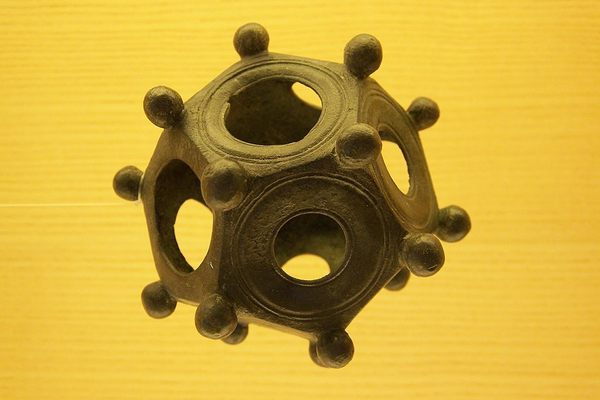For Sale: A Mouse-Infested Roman Helmet That’s Stumping Historians
Are the mysterious mice adorning this 1,800-year-old helmet part of an ancient joke?
(Update! The helmet sold for over $1.2 million at auction on January 3o, 2024.)
Swords encrusted with jewels and inlaid with gold, breastplates sporting chiseled abs, impressive Greek helmets oxidized by time to an otherworldly green. These are just a few of the remarkable Greek and Roman artifacts making up the largest private collection of ancient arms and armor in the world. But one item stands out among the rest: The Guttmann Mouse Helmet, an incredibly well preserved and ornate Roman Imperial helmet created in the mid-second century. Some of the helmet’s smallest details are also its most enigmatic, and still baffle experts today: A pair of tiny mice scamper beside loaves of bread on the back of the helmet. The helmet’s name is a nod to the mysterious motif, and to its previous owner, the late collector Axel Guttmann.
Collecting unique armor like the Guttmann Helmet has been Christian Levett’s mission for over 30 years. In 2011, the British investment manager turned art collector opened the Mougins Museum of Classical Arts in France. Now, Levett is shifting focus to women’s art through the ages, and the famous collection of arms and armor is up for auction on Jan. 30 at Christie’s in New York City. At the top of the lot is the Guttmann Helmet, prized for its condition and rarity; it’s estimated it will sell for more than a million dollars.


The mere fact that this helmet exists today, and in excellent condition, is a marvel, says Christie’s antiquities specialist Hannah Solomon. Compared to the bounty of Greek helmets in museums and collections, Roman ones are a novelty. “I’ve been in the department for the past 14 years and I’ve never sold a Roman helmet before,” says Solomon. “I sell lots of Greek helmets, and I’m kind of a helmet person.”
Caches of Greek helmets are somewhat common finds, and may have been buried en masse as memorials, but there was no similar tradition in Imperial Rome, says Greek and Roman historian David Potter at the University of Michigan. Where exactly all the helmets went is a mystery—although it wasn’t uncommon in that era to repurpose old armor and other metalwork for more practical uses. “Every time you hear a goat bell in Greece, it’s an ancient sculpture that’s been melted down,” says Solomon, quoting an old archaeology professor.
Potter theorizes the helmet may be so well preserved because it likely never saw a battlefield. The helmet’s iron alloy material would have made it weaker than the pure iron helmets of the time—which suggests it was probably worn by a Roman bureaucrat to signal status rather than to provide protection. “It’s not very practical,” says Potter. “It would make more sense to me if this belonged to somebody who occasionally has to put on a uniform and look fancy.” The helmet was found with a matching iron dolabra, a type of pickax, still in its brass sheath.
But what about those two mice on the back, and the shapes interpreted as loaves of bread beside them? Here’s where it gets tricky. Mice were common in Rome, depicted in art and eaten as delicacies—but that doesn’t explain why you’d want them on your war regalia, says Solomon. She adds that eagles and other powerful animals were more commonly associated with strength or protection. “You don’t often think of a mouse as warding off evil spirits,” she says.

Potter hasn’t been completely satisfied with explanations for the mice either, but Greek and Roman antiquities expert Richard Abdy at The British Museum poses an interesting possibility. “I always thought the mouse decoration charming, but strange,” he says. The neck guard of the helmet is engraved with the name Julius Mansuetus, possibly its original owner—and a potential clue to the rodents’ presence. “Perhaps [it’s] a punning reference on the Roman owner’s name, which means ‘meek,’ I think! Assuming the Romans had the same notion as we do of someone being ‘meek as a mouse.’” Potter agrees. “I think it probably is some kind of personal joke,” he says with a chuckle.
Viewing ancient armor can help us imagine what it was like to be soldiers of the time, says Solomon. Maybe the Guttmann Helmet can remind us that Imperial Romans could also enjoy a good joke.
This story originally ran in 2024; it has been updated for 2024.




























Follow us on Twitter to get the latest on the world's hidden wonders.
Like us on Facebook to get the latest on the world's hidden wonders.
Follow us on Twitter Like us on Facebook